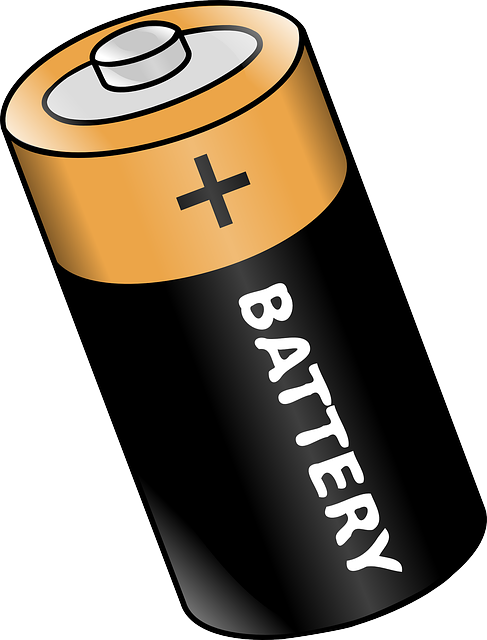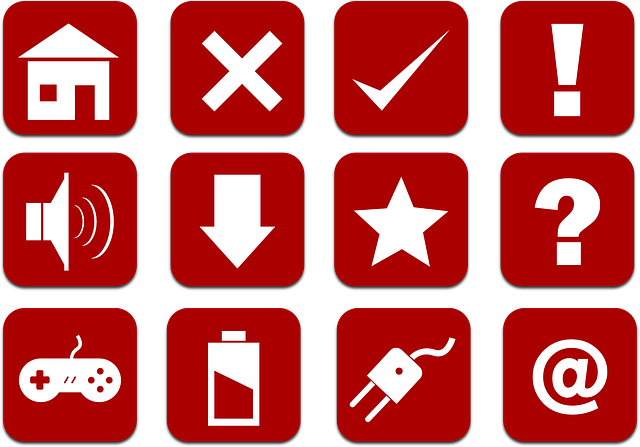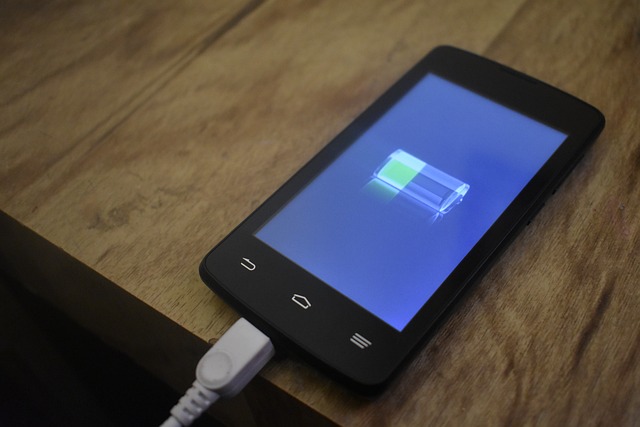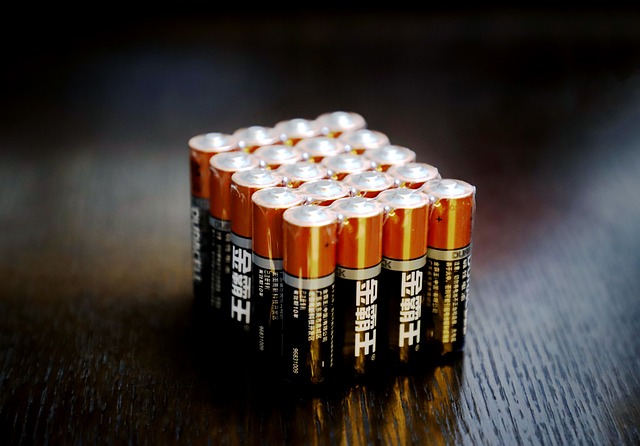When your laptop's power button glows dimly, it indicates it's ready for use or to access stored tasks. Contrary to popular belief, not all laptops require a new battery when their charge capacity diminishes; many modern laptops have energy-saving modes that maintain functionality and allow users to manage battery life effectively through power settings within the operating system. Before opting for a battery replacement, it's advisable to explore these options and consider a professional assessment to determine if adjustments can restore performance. If battery issues persist, investing in a high-quality replacement battery is recommended, ensuring it's compatible with your laptop model. Additionally, using the correct adapter that matches your device's specifications is crucial for maintaining optimal battery health and preventing early replacement needs due to improper power delivery. Proactive maintenance, including avoiding extreme temperatures, keeping the laptop plugged in most of the time to avoid unnecessary charge cycles, and calibrating your battery by discharging and recharging it fully every few months, can significantly extend its lifespan. Remember to follow the manufacturer's guidelines for battery replacement, which should be considered when the old battery exhibits signs of significant wear or fails to hold a charge adequately. Regular upkeep and understanding the correct use and care for your laptop battery are key to maximizing its lifespan and performance.
Navigating the complexities of laptop power management can be a daunting task, often marred by widespread misconceptions. Many users mistakenly believe that frequent charging or using an adapter with lower power output can extend their laptop’s battery life. This article demystifies these and other common myths surrounding laptop batteries and power sources, providing clarity on how to properly maintain your device’s power options. From understanding the true factors affecting battery durability to learning tips for knowing when it’s time to replace battery components, this guide is essential reading for anyone looking to optimize their laptop’s performance and longevity without falling prey to outdated advice.
- Understanding Your Laptop's Power Options: Dispelling the Myths of Battery Replacement
- The Lifespan Misconception: Factors That Affect Laptop Battery Durability
- Unplugging and Energy Saving: How Plugged-In Laptops Can Save Battery Life
- The Role of Adapter Quality in Your Laptop's Health
- Common Mistakes Leading to Premature Battery Replacement
- Tips for Effectively Replacing Your Laptop Battery When Necessary
Understanding Your Laptop's Power Options: Dispelling the Myths of Battery Replacement

When the power button on your laptop glows faintly, it’s a signal that your device is ready to engage with its surroundings or perform tasks stored in its memory. However, the interplay between your laptop’s internal power management system and its battery can often be shrouded in misconceptions. One prevalent myth is that a laptop’s battery needs to be replaced when it no longer holds a full charge. While it’s true that over time batteries degrade and their capacity to store energy diminishes, complete loss of performance isn’t an inevitable sign that the battery must be replaced. Modern laptops have power-saving modes that significantly reduce battery usage while preserving the laptop’s functionality for essential tasks. Users can also employ various power settings within the operating system to further conserve battery life. If you’re experiencing issues with your laptop’s battery, consider these options first. A proper assessment by a professional can determine if a replace battery is necessary or if adjustments to power usage and settings can restore optimal performance. Additionally, some laptops are equipped with alternative power sources such as an optional second battery or an external power adapter that can extend the device’s operational time, offering users flexibility based on their needs. Understanding these features can help you make informed decisions about your laptop’s maintenance and prolong its effective lifespan.
The Lifespan Misconception: Factors That Affect Laptop Battery Durability

When it comes to the lifespan of laptop batteries, many users harbor misconceptions that can lead to premature replacement or unnecessary concern. One prevalent myth is that completely depleting a battery is detrimental to its longevity; however, this is a misconception. Modern laptops feature smart charging technology that helps maintain the health of the battery by understanding its usage patterns and charge levels. Another misconception involves storage conditions. Leaving a laptop plugged in at all times can lead some users to believe that the battery’s lifespan is extended by constant charging, but this is not the case. In fact, it’s beneficial to occasionally calibrate your battery by fully charging it and then fully discharging it, which helps the laptop’s system accurately report the battery’s charge level.
Temperature extremes are a significant factor affecting battery durability. Both excessively high and low temperatures can degrade a laptop battery’s performance over time. It’s advisable to use your laptop in a moderate environment to protect the battery. Additionally, the chemistry of the battery itself plays a crucial role in its longevity. Lithium-ion batteries are common in laptops due to their high energy density and long life expectancy. However, the quality of these cells can vary significantly between manufacturers. When the time comes to replace your battery, opting for a high-quality replacement can ensure that you get the most out of your laptop’s power source. Regular maintenance and understanding the proper use and care of your laptop’s battery can help mitigate these misconceptions and extend its functional life. If you find that your battery is not holding a charge as it once did, it may be time to consider a replacement.
Unplugging and Energy Saving: How Plugged-In Laptops Can Save Battery Life

Unplugging your laptop might seem like a straightforward measure to preserve its battery health, but it’s not always the best strategy for energy conservation. Modern laptops are equipped with power-saving features that can optimize battery life even when they are plugged in. When connected to a charger, laptops draw power from the outlet and simultaneously recharge their batteries, which is particularly beneficial for lithium-ion batteries as it keeps them at an optimal charge level. This prevents the detrimental effects of full or zero percent charges that can shorten battery lifespan. Additionally, using your laptop while plugged in activates energy-saving modes that reduce its power consumption. These modes lower screen brightness and limit background processes, which can further extend your battery’s life between charges. Conversely, frequently unplugging your laptop to ‘save’ the battery can lead to unnecessary recharge cycles, potentially reducing its overall lifespan. Therefore, to maintain your laptop’s battery health, it’s advisable to keep it plugged in when not in use and only disconnect it when you need to be mobile. If you notice that your battery isn’t holding a charge as well as it used to, it might be time to consider replacing it, which can often be done by the user or professionally, depending on the laptop model. Regularly checking your laptop’s power settings and ensuring that energy-saving options are enabled will also contribute to maximizing battery life.
The Role of Adapter Quality in Your Laptop's Health

When it comes to maintaining your laptop’s health, the quality of the adapter plays a pivotal role. Often, users might overlook the importance of an adapter, considering it a mere conduit for power. However, this is far from the truth. A high-quality adapter not only ensures optimal power delivery but also helps in preserving your laptop’s battery health over time. Cheaper adapters might provide insufficient voltage or current, which can stress your laptop’s internal components and lead to premature battery degradation. Conversely, investing in a genuine manufacturer’s adapter guarantees the correct power specifications as per your device’s requirements, thus reducing strain on your laptop. This is crucial because consistent under-volting or over-volting can shorten the lifespan of your laptop’s battery, making a ‘replace battery’ scenario more likely. Therefore, while it might be tempting to opt for a less expensive third-party adapter, it’s wise to prioritize one that is compatible and certified to prevent potential issues related to power delivery, ultimately extending the life of both your laptop and its battery.
Common Mistakes Leading to Premature Battery Replacement

When it comes to laptop power sources, one of the most prevalent misconceptions is that a battery needs to be replaced prematurely due to common mistakes in usage and maintenance. A significant misstep many users make is consistently leaving their laptop plugged in once the battery has reached full charge. This practice can lead to a condition known as ‘battery memory loss,’ where the battery’s charging circuitry begins to believe the battery is always at 100% capacity, leading it to degrade faster. Another frequent error is allowing the battery to discharge completely before recharging, which can also strain the battery’s lifespan. It’s a common belief that this ‘exercise’ is beneficial for lithium-ion batteries; however, repeated deep discharges can overwork the cells and cause irreversible damage.
Furthermore, users often replace their batteries too early, misled by minor performance issues that are not indicative of a battery’s impending failure. For instance, a slight reduction in maximum charge capacity or a longer duration between charges does not necessarily signify a battery on its last legs. These changes can be part of the natural aging process and do not always warrant a battery replacement. It’s essential to monitor the health of your battery through the laptop’s built-in diagnostics, as overreliance on visual cues like screen color or charging duration can be misleading. Proper usage habits, such as maintaining optimal charge levels and avoiding extreme temperatures, can significantly extend a laptop battery’s lifespan, thereby avoiding an unnecessary replace battery scenario.
Tips for Effectively Replacing Your Laptop Battery When Necessary

When your laptop’s battery performance starts to wane, proactive maintenance can extend its lifespan and ensure optimal operation. To effectively replace your laptop battery, it’s crucial to select a compatible replacement that matches your device’s model specifications. Always refer to the manufacturer’s guidelines or official resources to ascertain the correct battery type for your laptop. Additionally, consider the battery health and capacity: a higher-capacity battery might offer longer usage times but could also be bulkier and heavier.
Before proceeding with the replacement, ensure that you have the necessary tools at hand. Typically, this involves a screwdriver set compatible with the size of the screws used in your laptop’s chassis. Follow these steps carefully: power down your laptop, disconnect it from any power source, and remove any stored data or sensitive information to prevent access upon disassembly. Once prepared, gently open your laptop, locate the battery, and disconnect it from the motherboard, following the device’s user manual or service guide for precise instructions. Upon removal of the old battery, install the new one in its place, reconnect it as required, and secure the laptop’s body. After assembly, charge the new battery to 50% for the first cycle, as recommended by many manufacturers, to calibrate the battery gauge accurately. This process helps in maintaining the health of the new battery and ensures that your laptop’s power management system can precisely monitor the battery’s charge level. Remember to replace the battery only when it fails to hold a charge or if it displays signs of wear and tear, such as bulging or swelling, which could indicate a compromised cell. Regular replacement under these conditions prevents unexpected shutdowns and prolongs your laptop’s service life.
In conclusion, understanding the nuances of your laptop’s power sources is pivotal for extending their lifespan and ensuring optimal performance. Common misconceptions about laptop power sources often lead to premature battery replacement; however, by recognizing factors that influence battery durability and adopting energy-saving practices even when plugged in, you can mitigate these issues. The quality of your adapter plays a significant role in your laptop’s health, as does the manner in which you use and eventually replace your battery. By heeding the tips provided to effectively time a battery replacement, you can avoid the pitfalls that necessitate early battery swaps and maintain the efficiency of your laptop. Remember, a well-informed approach to managing your laptop’s power options is key to its longevity and reliability.
